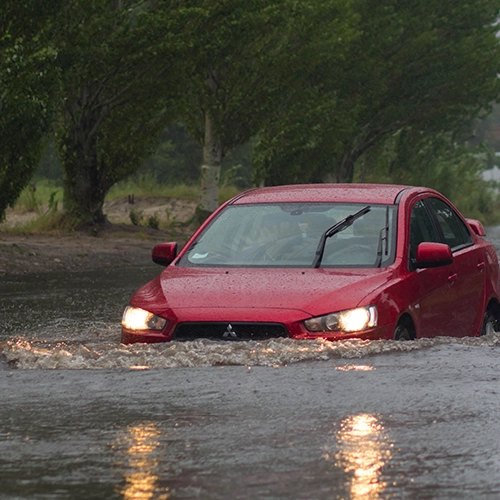02 December 2022
Living in a flood-risk area - what you need to know
4 minutes
Around 1 in 6 homes in England are at risk of flooding – and according to the Environment Agency, as our climate gets warmer and wetter, those numbers are set to increase. Plus, with the pressing need for more housing leading to more building on floodplains, it’s only natural to expect more houses to be at risk of flooding in the years to come.
Whether you already live in an area prone to floods, or you’re contemplating a move to a home near water, how can you protect your property from the impact of flooding? Here we take a look at everything you need to know, from flood resistance and resilience measures to finding the right home insurance.
How safe is living on a floodplain?
Many people love to live near water, whether by the coast or near a river – which is why there are plenty of people living in locations at risk of flooding. To make the level of risk clear to residents, the Environment Agency uses the following criteria:
- Flood Zone 1 – low likelihood of flooding, with less than 1 in 1,000 chance every year
- Flood Zone 2 – medium likelihood, with 1 in 100 and 1 in 1,000 chance of river flooding per year; or between a 1 in 200 and 1 in 1,000 chance of sea flooding
- Flood Zone 3a – high likelihood, with a 1 in 100 or more probability of river flooding; or a 1 in 200 or more probability of sea flooding every year
- Flood Zone 3b – these areas are known as the ‘Functional Floodplain’, where water has to flow or be stored in times of flood
It’s important to be aware of which zone you home falls under and the according level of risk, so you can make a proper contingency plan – from protecting your property as best you can to ensuring you have comprehensive home insurance so you can claim in the event you’re flooded.
How can you reduce the impact of flooding?
While you can never completely eliminate the risk of flooding, you can take steps to reduce the risk of water getting into your property and minimise the damage if it does make it over the threshold.
These methods are known as ‘flood resistance’ and ‘flood resilience’, and making sure you implement them can help you both manage the risk of your property being damaged and help to lower your insurance premium.
 |
What is flood resistance?Flood resistance refers to the measures you can take to reduce the risk of water getting into a property. By implementing these, you can give yourself enough time to move your belongings up from ground level and get the people living in the home to a place of safety in the event of a flood. Flood resistance measures include:
In addition to this, keeping your property well-maintained is essential. For example, making sure the pointing is in good condition above and below ground, and making sure all entry points are sealed, including cable entries through walls. This will give you the best chance of holding back any water from entering during a flood. |
What is flood resilience?Sometimes, it’s just not possible to stop water entering your property. Flood resilience is all about minimising the damage as much as you can if water does get in. By having robust protection measures in place, the idea is that you can get back to normal as quickly as possible once the flood has subsided. Flood resilience measures are usually tailored to your property. Some historic and/or listed properties, for example, will need specialist measures compared to more modern buildings as they are often constructed from non-standard materials. For more modern houses, flood resilience includes:
|
|
How does flood risk affect my home insurance?
The risk of flooding in your area will inevitably have an impact on your home insurance – you may find it challenging and more expensive to find a buildings and contents policy.
As there’s a higher chance that you may claim, you’ll need what’s known as non-standard home insurance, which is when your policy is tailored to the precise needs of your individual home. At Howden, we’ll tailor a flood insurance policy to your property, taking into account any preventative measures you’ve put in place to make your home more resilient.
The more measures you’ve taken, such as raising the electrics and using water-resistant materials, the more likely you are to source a policy including flood cover. We also have access to Flood Re – a scheme run by the government that’s designed to help those with properties in high-risk areas find home insurance subject to meeting the FloodRe criteria.
As a broker, we can also shop around the market on your behalf to find the best deal for your home, so even if you live close to a water source that may cause flooding in future, you can still rest assured that your home and its contents are properly protected. All we need is as much detail from you as possible, so we can make sure your cover is exactly right for your home.
To find out more, get a quote, or simply ask for our advice, give us a call on 0333 004 6444.

